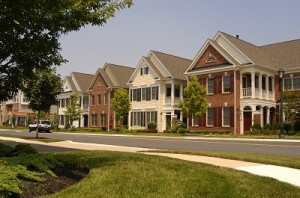If you own a home in a newer subdivision, you are likely a party to a binding contract whether you know it or not. In addition to applicable zoning ordinances and subdivision regulations, most subdivision developments provide for limitations or prohibitions on property uses and establish other requirements and limitations on buildings, fences and other structures.
Restrictive covenants (often referred to as covenants, conditions and restrictions (“CC&Rs”) are typically established and enforced by the subdivision developer initially, and then enforcement may later be turned over to a homeowner’s association (“HOA”). However, even if you purchase a home in an established subdivision where the developer is long gone and there is not an active HOA, there may be still be restrictive covenants of record that affect your property rights. They affect your rights because they are in the chain-of-title and are said to “run with the land.”
For example, common restrictive covenants of a residential subdivision establish minimum home size requirements (e.g., at least 2,000 square feet), or prohibit a detached garage or accessory building. Tennessee courts have repeatedly held that restrictive covenants “are not favored,” as they limit the free use and enjoyment of property; however, inasmuch as such covenants are clear and unambiguous, they will generally be enforceable—maybe by a next door neighbor. Many a home buyer has moved in with plans to make a house their dream home, only to find that what they wanted is prohibited, either by contract or by law.
If the three most important things about real estate are “location; location; location,” then “read the fine print” may be a close fourth.







